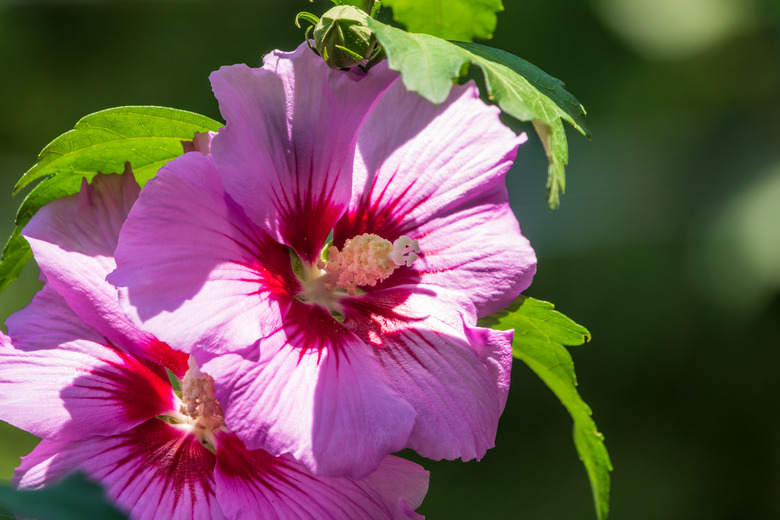How To Transplant Hibiscus
No plant better evokes the beauty of a lush tropical paradise than hibiscus. With their exotic flowers in vivid shades, they are enchanting elements in any garden. Tropical hibiscus species are the top choice for the warmest hardiness zones, while hardy hibiscus look similar but are much more cold hardy. Both types of hibiscus are easy to grow and transplant in the appropriate hardiness zones.
Meet the Tropical Hibiscus
Meet the Tropical Hibiscus
Tropical hibiscus (Hibiscus rosa-sinensis) comes from the warmest areas of Asia, and it is an extremely popular garden plant in the southern regions of the United States. It thrives outdoors in U.S. Department of Agriculture plant hardiness zones 9 through 11. Gardeners grow tropical hibiscus for its dramatic, trumpet-shaped flowers, up to 8 inches in diameter with protruding stamens. The blossoms, in single or double form, attract hummingbirds and butterflies.
Each flower's life span is one day only, but a healthy plant produces bloom after bloom over the entire warm season. In the warmest regions, this can be year-round, or almost. In chillier areas, they die with the first freeze, but the plants usually regrow from the roots in spring. Alternatively, you can grow tropical hibiscus in pots that stay outdoors in summer and spend the winter indoors in a sunny window.
Tropical hibiscus thrive in full sun to partial sun locations. They require well-drained soil and 7 inches of water a week during the growing season.
Meet the Hardy Hibiscus
Meet the Hardy Hibiscus
The hardy hibiscus (Hibiscus moscheutos) offers much of the same beauty and grace of the tropical hibiscus but thrives in colder climates. These lovely flowering plants thrive in U.S. Department of Agriculture plant hardiness zones 5 through 9. These are also called perennial hibiscus since they last many years in a cold climate while tropicals — also called annual hibiscus — can live outdoors for only one season.
Hardy hibiscus can grow taller than the gardener. They attain their mature growth in the first few years of their life, then stay at that height. Like tropical hibiscus, hardy hibiscus have large, vivid, trumpet-shaped flowers that attract butterflies and hummingbirds. They also prefer a sunny site and well-drained soil.
How to Transplant Hibiscus
How to Transplant Hibiscus
Every plant needs some elbow room, and hibiscus is no exception. When they get overcrowded or nearby trees have shaded their growing area, it's time to divide or transplant. This should occur in spring in most areas. You should ask at your garden store for the best local transplant time.
Before transplanting, select an appropriate new location and prepare the planting hole. Make sure the plant will have enough room, enough sun, and well-drained soil. Then prune out any dead growth and dig a trench around the plant as deep as the roots.
Use a sharp shade to dig down a little farther, then lift up the plant, keeping as much of the root ball intact as possible. Move the plant on a tarp to the new planting location, set it into the hole, then add soil and water. Be sure to irrigate every two days for the first few months to prevent transplant stress.
